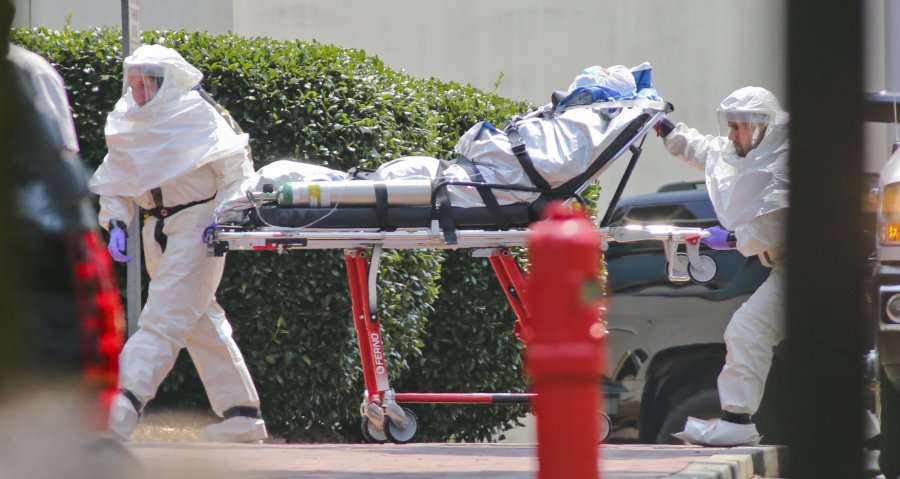Ebola poses deadly threat to humanity
Health Workers wear protective gear as they attend to Ebola victims.
November 3, 2014
Kids in class laugh about “you’re going to catch Ebola” when one says that they are coming down with something, but the reality is that the Ebola virus is not a joke. It is a select agent and is listed to have the potential to pose a severe threat to public health and safety. It has become an epidemic, and according to CDC, as of August 31, the total 2014 cases of Ebola are: a total case count of 6263 a total death count of 2917 and a laboratory confirmed case of 3487.
…And that’s only from the end of August. Patient Zero has not even been identified to this day and there are more cases day to day. Just in a week’s time, hundreds of people could get infected. “Brisbane Times” predict that the number of cases may exceed 20,000 before the epidemic is controlled. Moreover, this isn’t the first time Ebola has shown itself; there have been over 25 outbreaks of Ebola from 1976 to the present, and the virus may have mutated to a more virulent form- making it harder to control. The virus has currently spread through Guinea, Liberia, Nigeria, Senegal, Sierra Leone and the Congo of Africa.
According to WHO (World Health Organization) and CDC (Centers for Disease Control and Prevention), “Ebola is spread in the community through human-to-human transmission with infection resulting (through broken skin or mucous membranes) with blood and bodily fluids of one infected, and indirect contact with environments contaminated with such fluids.” A person infected with Ebola is not contagious until symptoms appear. Ebola is not spread through the air (unless it mutates) or by water. However, in Africa, Ebola may be spread as a result of handling wild animals hunted for food and contact with infected bats.
, which means that those infected are most likely going to get sick. Although this is true, it is not very contagious, meaning it doesn’t spread easily. It is very deadly, though, meaning that it is more likely to kill off everyone it has infected rather than spread it throughout the whole world. In previous outbreaks it has killed as many as 90% of the people it infected, says AAAS. Also, if it were to get in America somehow, experts say our health care system will be able to identify and contain the virus swiftly, according to CNN
Sadly, there are hospital staff who are getting infected due to helping the people who are infected, adding to the death toll.
More strikingly, 75 percent of Ebola victims are women, people who do much of the care work throughout Africa and the rest of the world, says “Slate”. Staff are also running low on supplies such as hazard suites, gloves and more, making it more difficult to lower chances in contracting the disease.
Thankfully, there has been progress with finding a drug for the virus. There is an experimental drug that cured 18 infected monkeys after three to five days. This drug is called ZMapp, that is said by an Israeli company that it can produce it, according to “Times of Israel”. Another method that infected countries have been trying to counter Ebola is having lockdowns. Many countries throughout the world are contributing to the cause and spending money towards the virus. America has sent troops in to help and countries like Germany will provide logistical help. The world is working together to stop the virus.





